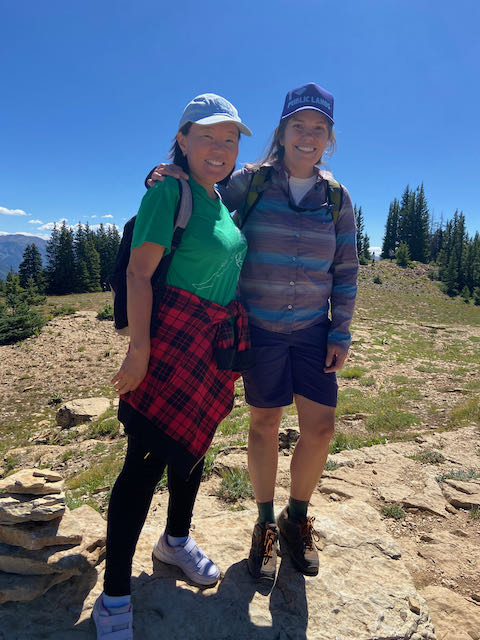Dry Smoky Isolated Mountain Home - My Climate Story
I am an environmental educator in the 21st century in the United States of America. I am a white woman with more years of formal education than most people in the world. I am a homeowner in a rural connected region of the Rocky Mountains. And, the climate crisis has been the most significant focal point of my civic and professional life. The weight of loss and grief has been a very personal and collective experience during these precarious times. I have felt so much uncertainty during this time as it is clearly understood that the climate of now is full of unknowns, injustices, anger, and crippling fear.
 |
| Smoky dry Crystal River with Mount Sopris in distance |
My direct experience of climate change has been an accumulative experience living in the mountain West. Continual drought and increasing temperatures throughout the Colorado River Basin is the primary manifestation of climate change in this region. Watching the Crystal River near my home dry to a bed of round smooth river rocks interspersed with puddles of warming river water, while in the distance our beloved Mount Sopris was barely visible, blanketed with heavy wildfire smoke, was unsettling in 2018. Since then, this has become an annual phenomenon for days and weeks at a time. Knowing that warm water does not hold enough oxygen for native fish, and that the river’s water has not consistently made it to the sea in decades, I am heartbroken bearing witness to the river that defines our valley. It is also this river’s treasured stretches that I have been working with others to designate as Wild and Scenic.
 |
| View from my front yard on July 4, 2018, Lake Christine Fire |
Intense catastrophic wildfire became very real for me and my community on July 4, 2018 when friends and I watched the Lake Christine fire blow up on Basalt Mountain nine miles east of Carbondale. Instead of fireworks (which were banned due to the tinderbox conditions) we watched the flames grow and explode from the front yard while finishing our watermelon and brews. This fire burned actively for nearly two months that summer. Travel was disrupted and limited due to all the air firefighting tactics as well as roads being closed. Watching the humongous flames burn all the way across the mountain with the pyrochumulous clouds were daily stunning ‘stop you in your tracks’ observations. It kept everyone’s nerves on hyperalert. It was my first wildfire to witness daily from my home; keeping watch on the flames and the smoke move through the sky, and breathing it all in depending on the direction of the winds.
Then two years later the Grizzly Creek fire took over Glenwood Canyon and closed the main artery freeway for weeks, let alone burning some of the most rugged steep terrain where the vegetation keeps the entire landscape from sliding into the river. Less than 12 months later, the loose rock and soil barely hanging on in these steep canyon gullies came rushing down bringing hundreds of thousands of cubic yards of material across the freeway and into the Colorado River once again cutting off access for travel with the significant damage to the roadway and rerouting the flow of the Colorado River. Wildlife and the resulting landslides isolated our mountain communities from all the things one may need from Denver as well as reduced the tourist economy significantly. Wildfires and landslides are touching our high elevation communities more frequently and on a scale that the old timers have ever remembered. We are having to learn to live with the impacts of being isolated as the four roads we have out of our mountain community are closed much more often.
 |
| Smoky Maroon Bells Snowmass Wilderness |
 |
| Double rainbow with Lake Christine Fire smoke on Basalt Mountain in the distance on July 22, 2018 |
As an educator who has inspired learners to believe that their voices are critical in taking action for climate solutions within their communities, sometimes I wonder if it is not too late. As the earth continues to warm, extreme weather events intensify, biodiversity collapses, and poor people (especially girls and young women) experience more frequent natural disasters, it can be difficult to see my teaching and empowering people making a difference fast enough. Yet I know wholeheartedly that it is the power of all people coming together unified to create systemic change that is making a difference.


Comments
Post a Comment